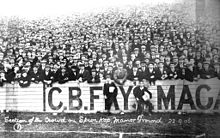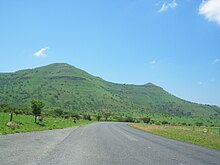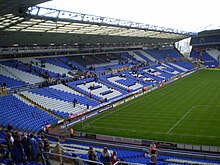
Liverpool Football Club is a professional football club based in Liverpool, England. The club competes in the Premier League, the top tier of English football. Founded in 1892, the club joined the Football League the following year and has played its home games at Anfield since its formation.
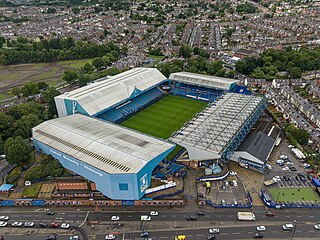
Hillsborough Stadium is a football stadium in Sheffield, England. It has been the home of Sheffield Wednesday since opening in 1899.

Anfield is a football stadium in Anfield, Liverpool, England, which has a seating capacity of 61,276 making it the fifth largest football stadium in England. It has been the home of Liverpool F.C. since their formation in 1892. It was originally the home of Everton from 1884 to 1891, before they moved to Goodison Park after a dispute with the club president.

Goodison Park is a football stadium in the Walton area of Liverpool, England, 2 miles (3 km) north of the city centre. It has been the home of Premier League club Everton since 1892 and has an all-seated capacity of 39,414.
The Hillsborough Stadium Disaster Inquiry report is the report of an inquiry which was overseen by Lord Justice Taylor, into the causes of the Hillsborough disaster in Sheffield, South Yorkshire, England, on 15 April 1989, as a result of which, at the time of the report, 95 Liverpool fans had died. An interim report was published in August 1989, and the final report was published in January 1990.

Valley Parade, known as the University of Bradford Stadium for sponsorship reasons, is an all-seater football stadium in Bradford, West Yorkshire, England. Built in 1886, it was the home of Manningham Rugby Football Club until 1903, when they changed code from rugby football to association football and became Bradford City. It has been Bradford City's home since, although it is now owned by former chairman Gordon Gibb's pension fund. It has also been home to Bradford for one season, and Bradford Bulls rugby league side for two seasons, as well as host to a number of England youth team fixtures.

Elland Road is a football stadium in Beeston, Leeds, West Yorkshire, England, which has been the home of Championship club Leeds United since the club's formation in 1919. The stadium is the 13th largest football stadium in England.

Deepdale is a football stadium in the Deepdale area of Preston, England, the home of Preston North End. Deepdale is widely recognized as being the oldest continuously used football stadium in the world, though this is contested.

Stanley Park was a proposed football stadium in Stanley Park, Liverpool. If built, it would have become home to the Liverpool Football Club. It would have replaced their current stadium at Anfield. The stadium had a planned capacity of 60,000 all-seated. It was also potentially expandable to 73,000 or more.

St Andrew's, known for sponsorship reasons as St. Andrew's @ Knighthead Park, is an association football stadium in the Bordesley district of Birmingham, England. It has been the home ground of Birmingham City Football Club for more than a century.

Meadow Lane is a football stadium in Nottingham, England. It is the home ground of Notts County, who have played there since it opened in 1910. The stadium was also home to Notts County Ladies F.C. from 2014 to 2017.

Bloomfield Road is a football stadium in Blackpool, Lancashire, England, which has been the home of Blackpool Football Club since 1901. It is the third stadium in the club's existence, the previous two being Raikes Hall Gardens and the Athletic Grounds.
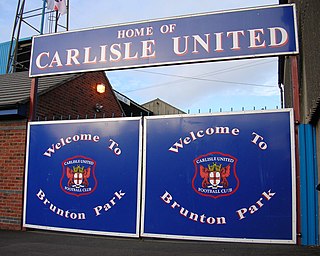
Brunton Park is a football stadium and the home of Carlisle United. It is situated in the city of Carlisle and has a certified capacity of 17,949. The ground opened in 1909. Brunton Park's grandstand burned down in 1953 and the stadium flooded completely in 2005 and again in 2015.

An all-seater stadium is a sports stadium in which every spectator has a seat. This is commonplace in professional association football stadiums in nations such as the United Kingdom, Spain, and the Netherlands. Most association football and American football stadiums in the United States and Canadian Football League stadiums in Canada are all-seaters, as are most baseball and track and field stadiums in those countries. A stadium that is not an all-seater has areas for attendees holding standing-room only tickets to stand and view the proceedings. Such standing areas are known as terraces in Britain. Stands with only terraces used to dominate the football attendance in the UK. For instance, the South Bank Stand behind the southern goal at Molineux Stadium, home of Wolverhampton Wanderers, had a maximum of 32,000 standing attenders, while the rest of the stadium hosted a little bit less than that; the total maximum attendance was around 59,000.

The Racecourse Ground, known for sponsorship reasons as the STōK Cae Ras, is a football stadium in Wrexham, Wales. It is the home of Wrexham A.F.C.

Prenton Park is a large outdoor seated association football stadium in Birkenhead, England. It is the home ground of Tranmere Rovers, as well as Liverpool's women and reserves teams. The ground has had several rebuilds, with the most recent occurring in 1995 in response to the requirement of the Taylor Report to become all-seater. Today's stadium holds 16,587 in four stands: the Kop, the Johnny King Stand, the Main Stand and the Cowshed.

Roots Hall is a football stadium located in Southend-on-Sea, Essex, England. The stadium is the home ground of the Vanarama National League team Southend United. With a capacity of 12,392, Roots Hall is the largest football stadium in Essex. During the early 21st century, there was lengthy discussion of a new 22,000 seat stadium at Fossetts Farm, but a change of ownership in 2023 seemingly ended prospects of that development.

Saltergate, officially the Recreation Ground, was the historic home of Chesterfield Football Club, and was in use from 1871 until the club's relocation in July 2010, a 139-year history that made it one of the oldest football grounds in England at the time of its closure. From the 1920s onward the name 'Saltergate' became predominant in popular references to the ground.
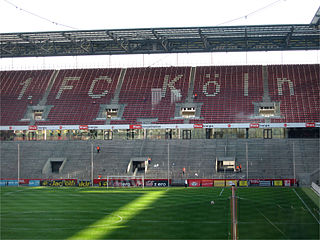
A terrace or terracing in sporting terms refers to the standing area of a sports stadium, particularly in the United Kingdom and Republic of Ireland. It is a series of concrete steps, with intermittent safety barriers installed at specific locations to prevent an excessive movement of people down its slope.
A large number of English football clubs have ongoing schemes to redevelop existing grounds, or to move to newly constructed stadiums. A trend towards all-seater stadiums was initially prescribed by the Taylor Report, and was originally a condition only of Premier League admission. It has now become a requirement that within three years of a club's first promotion to the Championship all paying spectators are seated, even if the club is subsequently relegated. This page provides an (incomplete) list and description of those clubs who have planned new stadiums or refurbishments, or who have already moved/refurbished since around the time of the Taylor Report.
